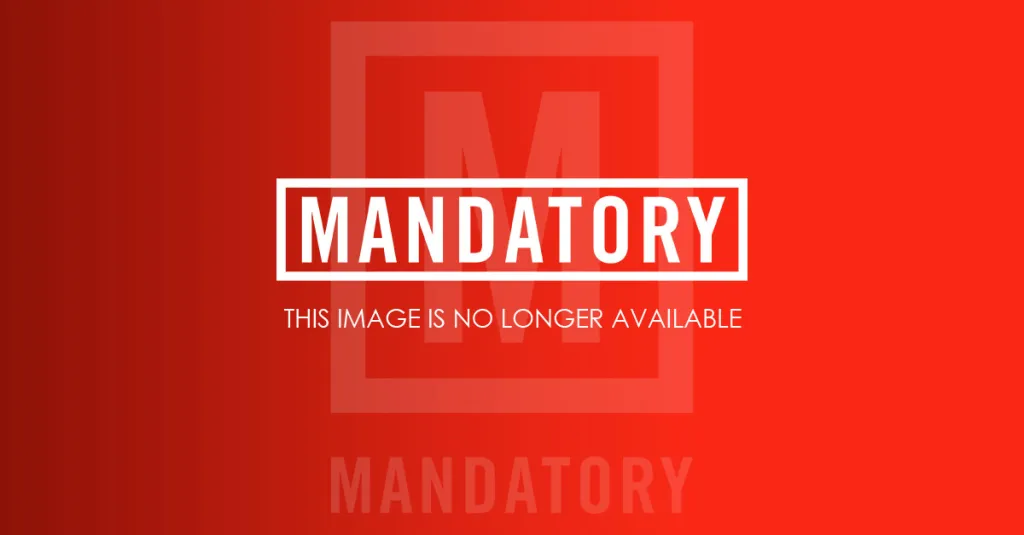Carl Stalling (1891 – 1972) is, without exaggeration, one of film’s most important composers and is, without hyperbole, one of the single most influential music-makers in American history. He should be ranked among greats like Bernard Herrmann, Ennio Morricone, and John Williams in terms of his cultural stature. And yet, his name is rarely mentioned in the same breath as those other greats.
Stalling was, if you cannot immediately recall the name, the musical genius behind almost all of the notable Warner Bros. cartoon shorts from 1936 until 1958. Some of the funniest, best, and most revolutionary cartoon shorts were produced by Warner Bros. during this period, and Carl Stalling was one of the most consistent and hardest working talents to have contributed.
Also: LeBron James and Justin Lin Team Up for ‘Space Jam 2’
Stalling’s genius was, essentially, repurposing and remixing a vast mental library of well-known classical pieces, old-fashioned standards, and downright obscure folk tunes from a century ago, into a recognizable, friendly, hilarious form of musical celebration. His sound became so ubiquitous in Saturday morning TV slots, that his music came to underline several generations of children, introducing them, in a subtle and salient way, to a vast musical library.
Several years back, Warner Bros. records decided to give the man his due, and released a record called The Carl Stalling Project: Music from Warner Bros. Cartoons 1936 – 1958. We here at SoundTreks have listened to the album, and will now take you, dear and lucky readers, through it track by track as a tour of appreciation of one of cinema’s great musical geniuses.
Track 1. “Putty Tat Trouble” Part 6 (1951)
This track is a complete audio recording of in-studio orchestrations conducted by Stalling while making the 1951 short Putty Tat Trouble. The album includes audio of Stalling himself counting down and directing his orchestra. With Stalling’s sound such a permanent part of so many people’s consciousness, it’s easy to forget that he was a working man who had to do several takes and perfect this sound in a working environment. This first track is meant, I think to humanize Stalling. To let us see him as a man, rather than a collection of childhood memories.
Track 2. “Hillbilly Hare” (1950)
I wouldn’t know the song “I’m Bringing Home a Baby Bumblebee” were it not for Stalling (although my big sister was the one who introduced me to the vomit-centric lyrics as a child), and he cannily included it when slow-moving people or hicks were depicted. If one looks close enough, one will discover that Stalling quoted many, many standards that may even be forgotten today. “Hillbilly Hare” displays every piece of the Stalling orchestra in action. Flutes are given bird-like riffs, reeds are given classical “sneak” music, fiddles evoke the South. The moods rotated quickly, as they would have to in a seven-minute cartoon.
Track 3. Early WB Scores: The Depression Era (1936 – 1941)
The early works of Stalling were, you’ll find, more tinkly, more jazzy, and more evocative of Tin Pan Alley blues. He still quoted a lot, but he quoted the jazz and blues musicians of the time more than anything. It’s been said that Warner Bros. cartoon shorts were very urban, and characters like Bugs Bunny were meant to be animal versions of playful street tramps. Compare that to the placid farm cleanliness of Disney, and the jazziness stands out in starker relief.
This track includes clips from Porky Poultry Plant, Stalling’s first WB score, as well as 1936’s Milk and Money, 1937’s Porky’s Romance, 1938’s Daffy Doc, and 1941’s Porky’s Midnight Matinee.
Track 6. “There They Go Go Go” (1956)
Carl Stalling’s best work may have come from Chuck Jones’ excellent Roadrunner cartoons. These were more or less silent movies that strung together a tragic string of comic vignettes wherein a desperate coyote would attempt to kill a feckless roadrunner, only to harm himself. With no dialogue – or story really – Stalling’s music would have to speak all the more clearly to dictate the mood. His music worked in sublimely with the timing of the cartoons to create some of the most immaculate comedy ever committed to film. This track is the entire soundtrack to the short, this time without sound effects. You can almost picture the film.
Track 7. Stalling Self-Parody: Music from “Porky’s Preview” (1941)
And yes, Stalling was aware of how he was seen by the WB film community. It’s not that he was disrespected; far from it. But cartoons were seen as a lesser business when compared to WB’s big-hitting studio features, and Stalling was part of that “lesser” team. The team, however, were happy with their position, as they were often granted more wild creative freedom. Pretty soon, they were making slapstick flicks for themselves, and making many in-jokes. Indeed, you’ll find that many of the WB cartoon shorts were self-parodies about WB operation, and about the making of the cartoons therein. In this track, you can hear Stalling giving a rendition of “The Merry-Go-Round Broke Down” as how it must have sounded to the bigwigs at WB. Plinky, toy-like, and childish.
Track 8. Anxiety Montage (1952 – 1955)
Although just about every one of the WB cartoon shorts was a comedy, Stalling could crack out with some pretty dark emotions. Many of the shorts, you may find, were kind of nightmarish and horrifying, thanks to the occasionally grotesque animation (most notably from director Bob Clampett) and to Stalling’s virtuosic, Herrmann-like efforts. The “Stalling sting” shall never be outdone.
This track contains spooky samples from Tree for Two (1952), Claws for Alarm (1954), Jumpin’ Jupiter (1955), Duck Dodgers in the 24th ½ Century (1953), and Hyde and Hare (1955).
Track 11. Carl Stalling with Milt Franklyn in Session
Milt Franklyn assisted Carl Stalling for almost Stalling’s entire run at WB, and learned all the ins and outs of the biz directly from the master. Franklyn would eventually replace Stalling when he retired from the WB camp in 1958, having scored cartoons as early as 1954. This track has audio of Stalling directing Franklyn on Putty Tat Trouble, working on a Franz Liszt riff. I love these studio behind-the-scenes audio tracks. We can hear how efficient these people were at making some amazing comedies.
Track 12. “Speedy Gonzalez” (1955) Meets “Two Crows From Tacos” (1956)
Speedy Gonzalez, of course, caught a lot of flack in the PC-happy 1990s when it was finally acknowledged that he was a pretty racist caricature. Never mind that Latino audiences kind of loved the character. Is Speedy racist? Yes, a little. Is he a good character? Actually, yeah. He’s an endlessly happy, optimistic, downright heroic character who helps his fellow mice, damages cats, and who is eager to use his talents for the greater good. He also gave Carl Stalling an opportunity to tap into his knowledge of Latino musical forms, incorporating Mexican folk, Spanish guitars, and the like. However stereotyped it may sound to modern ears, many countries and eras tended to have a particular sound in movies. Mexico and South America sounded one way. Roman epics, you’ll find all had similar music. I prefer to think that, in both cases, we’re tapping into extended cinematic traditions.
Track 13. “Powerhouse” and Other Cuts from the 1950s
“Powerhouse,” written by Raymond Scott in 1937, is one of the most recognizable musical riffs in all of cartoon-dom. Large machinery often had “Powerhouse” as its theme. Stalling may not have written the piece, but he utilized it so expertly, you would be forgiven for thinking that he had.
This track is a sampling of Stalling quotations,most of which you may recognize, but some you’ll have to look up. The cartoons sampled are Turntale Wolf (1952), Early to Bet (1951), one of my personal favorites in Drip-Along Daffy (1951), Bear for Punishment (1951), Scent-Imental Romeo (1951), Feed the Kitty (1952), Beep Beep (1952), Corn Plastered (1951), and A Hound for Trouble (1951).
Track 14. “Porky in Wackyland” (1938) and “Dough for the Do Do (1949)
The 1949 cartoon is a remake, almost shot-for-shot, of the 1938 cartoon. As in most things, I prefer the original, but they’re both pretty excellent. Stalling would often create a lot of the musical-based sound effects for the WB cartoons, often working with Treg Brown to make a full soundscape. Indeed, the full audio of these cartoons are included because of Stalling’s complete involvement. He did the music, but also tended to dictate the entire sound of any cartoon. When Mel Blanc sang, he worked with Stalling. Yes, that is Blanc singing the “rubber band” music.
Track 15. “To Itch His Own” (1958)
To Itch His Own was the final cartoon Stalling did for Warner Bros., and, as you can hear, his work never diminished. By 1958, Stalling’s sound has only grown more expert. He started out with jazz and playfulness, and slowly, over the course of 22 years, became more and more classical and professional. This late score sounds slicker, more polished, and more orchestral than the early samples. The musical cues and general mood may be similar, but the actual format and attitude has changed.
In Conclusion:

Warner Bros.
This album is a wonderful sample of Stalling’s music, but, at only 78 minutes in toto, it doesn’t seem like an ultimate collection or something that may be considered fully representative of his work. There was eventually a Carl Stalling Project Volume 2 released, five years after this one, in 1995, but even together, they don’t really capture the span and breadth of the man’s entire career.
But then, what could? A 15-disc box set? No, I think if you want a sampling of Carl Stalling this record – and its follow-up – will do rather nicely. Having any amount of Carl Stalling available as an album is a positive move, and, to be honest, after listening to a great deal of Carl Stalling at one time can leave the listener kind of exhausted. Stalling, after all, wrote scores for 7-minute films. They had to be fast, eclectic, and frantic. That’s easy to take for seven minutes, but for several hours, one may start to sweat a bit.
So it’s not holistic, comprehensive song collecting, this record, but it is pretty great.
Top Image: Warner Bros.
Witney Seibold is a contributor to the CraveOnline Film Channel, and the co-host of The B-Movies Podcast and Canceled Too Soon. He also contributes to Legion of Leia and to Blumhouse. You can follow him on “The Twitter” at @WitneySeibold, where he is slowly losing his mind.
Previously on SoundTreks:
SoundTreks
-
SoundTreks | All the 'Teenage Mutant Ninja Turtles' Theme Songs

The best Teenage Mutant Ninja Turtles theme song may very well be from a movie nobody liked...
Photo: New Line Cinema
-
SoundTreks | Easy Rider

How does the soundtrack to the seminal 1969 film play to a modern audience?
Photo: Columbia
-
SoundTreks | The Nice Guys

The Nice Guys is loaded with awesome '70s funk and disco. But is that old news?
Photo: Warner Bros.
-
SoundTreks | The Simpsons Sing the Blues

The Simpsons ventured into music very early in their run. How does this hit 1990 tie-in album sound 26 years later?
Photo: 20th Century Fox
-
SoundTreks | American Psycho

Does the soundtrack to American Psycho make one want to dance, or commit senseless acts of horrific violence?
Photo: Lionsgate
-
SoundTreks | The Carl Stalling Project

Carl Stalling wrote the music for most of the best Looney Tunes. Hence, you owe your childhood to him.
Photo: Warner Bros.
-
SoundTreks | William Shakespeare's Romeo + Juliet

SoundTreks, on Shakespeare's quadricentennial, looks at The Bard's most rockin' '90s soundtrack album.
Photo: 20th Century Fox
-
SoundTreks | Barbershop: The Next Cut

The soundtrack to the fourth Barbershop is full of soul, but is it better than the film?
Photo: Warner Bros.
-
SoundTreks | Space Jam

The Looney Tunes basketball movie is an affront to man and beast. Its soundtrack, however, may be worth saving.
Photo: Warner Bros.
-
SoundTreks | Everybody Wants Some!!

The soundtrack to Linklater's latest film attempts to encapsulate all early-'80s nostalgia in just 16 tracks.
Photo: Paramount
-
SoundTreks | Supercop

Remember that time America re-cut Jackie Chan's movies and made them worse? They had awesome soundtracks.
Photo: Dimension
-
SoundTreks | Batman (1989)

We love Batman. We love Prince. Two great tastes that tasted very weird together in 1989.
Photo: Warner Bros.
-
SoundTreks | Transformers: The Movie

Let's celebrate the Transformers phenomenon by listening to that weird-ass 1986 movie soundtrack.
Photo: Hasbro
-
The Top 10 Ennio Morricone Scores

Celebrate a master composer's first Oscar win by listening to Ennio Morricone's ten best movie scores.
Photo: The Weinstein Company
-
SoundTreks | Monty Python and the Holy Grail

On its 40 ½th anniversary, SoundTreks examines inventive and absurdist soundtrack to Monty Python and the Holy Grail.
Photo: Cinema 5 Distributing
-
SoundTreks | Marie Antoinette - Disc 1

Any multiple-volume soundtrack record probably rocks. How much does the first half of the OST of 2006's Marie Antoinette rock? Or shoegaze?
Photo: Columbia
-
SoundTreks | Zoolander

Is the soundtrack to Zoolander as painfully dated as Zoolander himself? SoundTreks investigates!
Photo: Paramount
-
SoundTreks | Deadpool

The anticipated R-rated superhero comedy has a fun, weird, kind of ironic soundtrack record. Let's listen.
Photo: 20th Century Fox
-
SoundTreks | Highlander

SoundTreks reviews at the best movie soundtrack that was never released.
Photo: 20th Century Fox
-
SoundTreks | The 2016 Oscar-Nominated Scores

Crave gave a serious listen to all the musical scores nominated at this year's Oscars, and selects the potential winner.
Photo: ABC
-
SoundTreks | The 2016 Oscar-Nominated Songs

Crave reviews the five songs nominated for this year's Best Song Oscar, and predicts the winner.
Photo: ABC
-
SoundTreks | The Best David Bowie Songs in Films

David Bowie's songs have been used in hundreds of movies and TV shows. These are some of the smartest uses of his music.
Photo: British Lion Films
-
SoundTreks | We Love Disney

Can Disney do justice to Disney with its latest tribute to the overwhelming awesomeness of Disney?
Photo: Disney
-
SoundTreks | Anomalisa

Can a soundtrack record also be an adaptation of the movie? Anomalisa attempts this unusual feat, and succeeds.
Photo: Paramount
-
SoundTreks | The Best Movie Soundtracks of 2015

The best movies don't always have the best soundtracks. Here are the eight most excellent soundtrack records of 2015.
Photo: Warner Bros.
-
SoundTreks | The Top 6 Christmas Songs from Film and Television

A lot of your favorite holiday standards were originally composed for movies or TV shows. Here are our six favorites.
Photo: Warner Bros. Television
-
SoundTreks | Fifty Shades of Grey

It was a hugely successful movie with a hugely successful soundtrack. But is that soundtrack actually any good?
Photo: Universal Pictures
-
SoundTreks | Elf

Is the soundtrack to this holiday favorite really a classic collection of Christmas standards?
Photo: New Line Cinema
-
SoundTreks | Streets of Fire

This rarely-celebrated 1984 cult movie - and its awesome soundtrack - deserves to be celebrated more.
Photo: Universal Pictures
-
SoundTreks | Glitter

Mariah Carey's musical is one of the most hated films of the 2000s. Is the soundtrack any better?
Photo: 20th Century Fox
-
SoundTreks | O Brother, Where Art Thou?

Who would have thought that obscure mountain bluegrass would make for one of the best soundtrack records of all time?
Photo: Buena Vista
-
SoundTreks | Pulp Fiction

Quentin Tarantino has been in the news a lot lately, so let's look at the legendary soundtrack record to his best movie.
Photo: MCA
-
SoundTreks | Twilight

Celebrate the 10th anniversary of Twilight with a review of the soundtrack, which is better than it has any right to be.
Photo: Summit Entertainment
-
SoundTreks | Rockula

There are very few horror musicals in the world, but the 1990 oddity 'Rockula' may be the best of them.
Photo: Cannon Films
-
SoundTreks | Zombie Nightmare

Does this crappy '80s zombie flick - once featured on Mystery Science Theater 3000 - have one of the best metal soundtracks of all time?
Photo: New World Pictures
-
SoundTreks | Danny Elfman – Music for a Darkened Theatre, Vol. 1

This compilation of Danny Elfman's early film and TV work reveals a composer we all miss, even though he's still working.
Photo: MCA
-
SoundTreks | The 10 Best Horror Movie Themes

SoundTreks peels back cinema's skin to reveal the creepiest, scariest, and just plain best horror movie theme music.
Photo: 20th Century Fox
-
SoundTreks | L.A. Confidential

Crime and jazz overlap in the excellent soundtrack to Curtis Hanson's 1997 classic.
Photo: Warner Bros.





